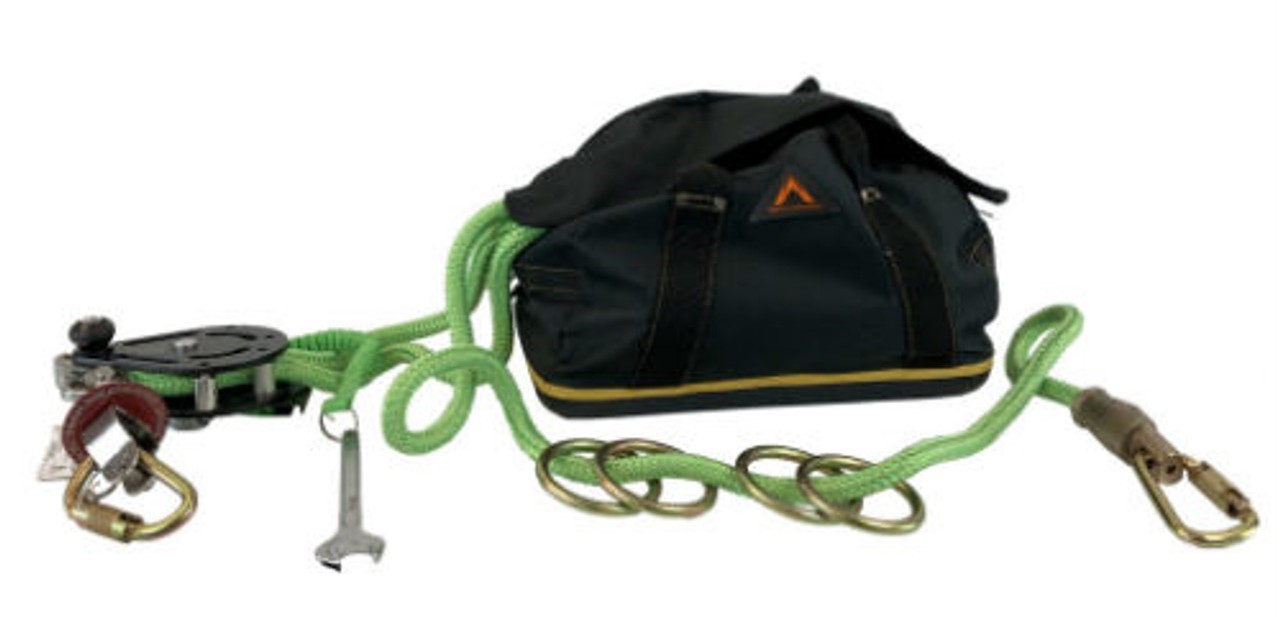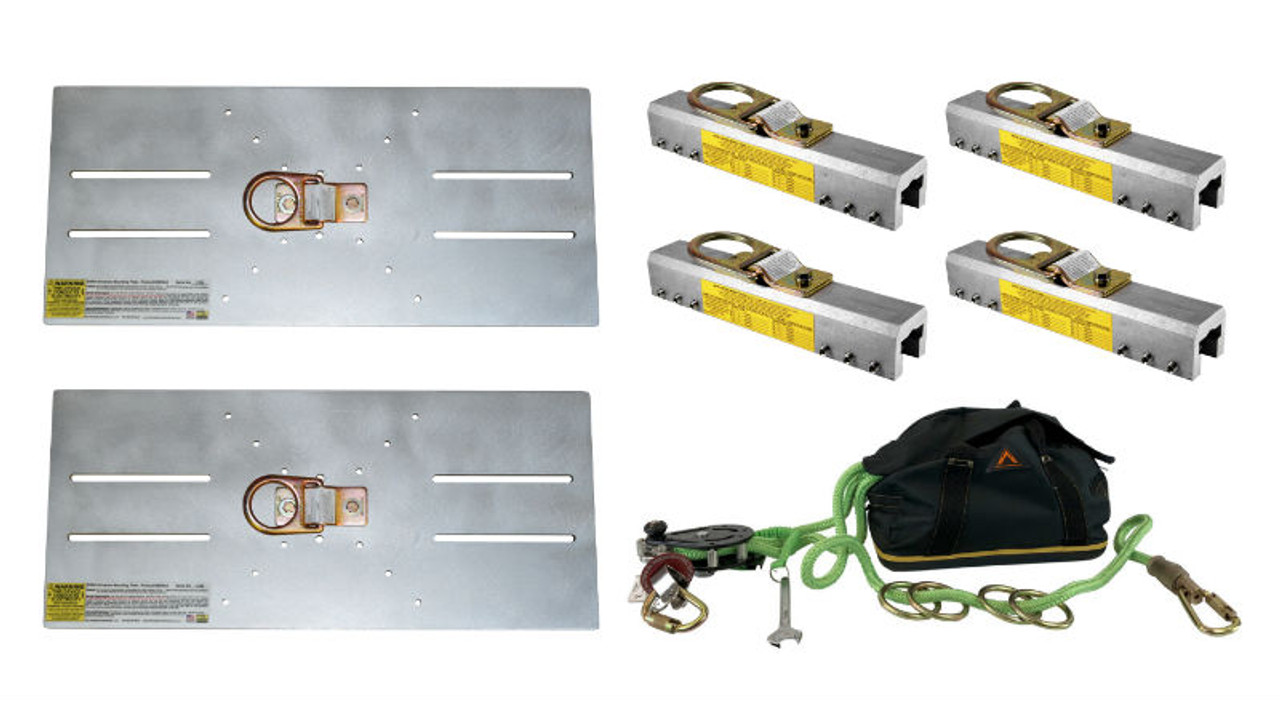What is a Horizontal Lifeline?
Posted by Howie Scarboro - CEO Fall Protection Distributors, LLC on Oct 26th 2020
A horizontal lifeline system is made of a cable track, permanently fixed to a structure utilizing several individual anchor points. A user must hook up to the system by wearing a full-body harness, and employing a lanyard and runner. Workers then do not have to reattach themselves to a system giving them more freedom of movement.
Permanent Horizontal Lifeline
A permanent horizontal lifeline system is one of the ways for the fall protection of your employees. A roof lifeline system consists of wire ropes attached to a minimum of two anchor points. Permanent lifelines must be set up if you need a system that has to stay in place for maintenance or follow-up.
All roof lifeline systems have two endpoints. The lifeline is attached to the anchor points on each end of the system. This lifeline system also has extra posts, corners, intermediate support, and anchor points between the endpoints.
All supports are fixed to posts that are anchored to the structure of a building. The space between each anchor point and post is named a span.
Permanent systems are the best options for a workplace that has more long-term projects. The lengths of these lifeline systems vary depending on the need in the workplace. There are different configurations in these lifelines, including brackets, mounting hardware, and fall impact absorbers. They also come in different materials.
Temporary Horizontal Lifelines
A horizontal lifeline kit is a portable and reusable option for those who have a different roof or building jobs and need a system that can be taken from one place to another. This solution uses a lightweight system that includes accessories to customize, depending on the need.
These horizontal lifelines give you flexibility while still ensuring the safety of your workers. Additionally, there are numerous affordable options for clients.
These lifelines have adaptors that can be attached to anchor points, visual impact indicators, and impact absorbers. Some options also include straps, snap hooks, web tensioner, and movable D-rings for lanyard attachment.
A temporary lifeline system is an efficient and suitable option for contractors who work various jobs thanks to its portability and flexibility.
A popular temporary horizontal lifeline kit can hold 4 workers and features premium kernmantle rope for strength and durability. The Malta Dynamics HLL3001 is our best seller in this category and can be used on most roof types. There is also a specialized kit designed for use on standing seam metal roofs.


Other Considerations
Fall clearance is one of the factors to consider when discussing lifeline systems and fall protection. When a worker falls while he is attached, the system will deflect within the fall direction. A fall clearance, which is the distance available for an individual to fall without hitting a lower level, must be more substantial if deflection is high.
The calculated fall clearance can't be above the available distance between the working surface and a lower level.
An anchor load is another consideration in system calculations, and this is the force exerted on a horizontal lifeline in a fall arrest incident. The span distance and sag angle, for instance, influence the Maximum Arrest Load (MAL). Energy absorbers are necessary to protect the integrity of a building.
Energy absorption of posts and the system's capacity to decrease loads exerted on an anchor and absorb the blow must be looked into by contractors or users. Energy absorption directed to lessen the strain in a person is also crucial.
The Takeaway
There are tons of factors to consider when choosing a horizontal lifeline. So the takeaway is, do remember to keep in mind the length of the job or contract, budget, fall clearance, energy absorption, and others. So even if the job is on top, the bottom line is safety and fall protection.

